Last Friday we learned about Liz's father's garden on the spot where a bomb had landed in London during the Blitz and her grandmother's garden and rockery. Liz then wrote about her garden in Southern New Hampshire and its surprisingly short growing season. Today is the second part of her story. Lucky for us, there are even more to come over the new two weeks.
My next major garden project turned out to be in Colorado, where Tim had his first headship at the Fountain Valley School. We lived in a magnificent Hacienda, designed by Addison Mizner, the Palm Beach architect, and my courtyard garden was surrounded on three sides by cloistered walks and a tower. Although later I realised I should have been ecological, growing cactuses and native desert plants, at the time I revelled in everything that loved sunshine – iris, dahlias, lavenders and annuals. Some plants, like phlox, had trouble with powdery mildew because of the dry air, but many old English favorites did well. I grew honeysuckle over an arched gate, climbing roses and clematis on the cloister pillars, and espaliered apples on the cloister walls. Teaching theatre and running the Arts Department, I also had many roles as a headmaster’s wife, but with three small children to keep an eye on, my favorite activity was creating a small fertile world in that courtyard. Luckily, it was also a place used for school receptions, so my efforts were appreciated by the grounds crew – they didn’t have to worry about looking after it – but they did mow the lawn!
Early in our marriage, Tim and I had bought a small cottage on the south west coast of Wales. This had been a 40-acre smallholding, a self-sustaining farm with about 15 dairy cows and a vegetable garden. We only owned two acres, and much of the land was on the steep edges of a valley running down to the sea a mile away. But from the start that original vegetable plot was useful. My parents loved to come down from London in the spring and plant things for us to harvest when we arrived from the USA in the summers – and in no time it contained rhubarb, raspberries, gooseberries, currants, loganberries and blackberries… (though as the lane down to the cottage was covered in wild blackberries, these last were rather redundant.) There were often potatoes waiting for us (wonderful for children to discover!) though the local rabbits probably ate more of the above-ground vegetables than we did. We did manage to have a few flowers, but with nobody living there much of the time the survivors were shrubs like spireas and hydrangeas, or roses, clambering in the hedges. For bright blossom, our mainstay was a hanging basket by the front door, bought as soon as we arrived. To be surrounded by a real garden, Little Mountain would have to wait until we retired.
Early in our marriage, Tim and I had bought a small cottage on the south west coast of Wales. This had been a 40-acre smallholding, a self-sustaining farm with about 15 dairy cows and a vegetable garden. We only owned two acres, and much of the land was on the steep edges of a valley running down to the sea a mile away. But from the start that original vegetable plot was useful. My parents loved to come down from London in the spring and plant things for us to harvest when we arrived from the USA in the summers – and in no time it contained rhubarb, raspberries, gooseberries, currants, loganberries and blackberries… (though as the lane down to the cottage was covered in wild blackberries, these last were rather redundant.) There were often potatoes waiting for us (wonderful for children to discover!) though the local rabbits probably ate more of the above-ground vegetables than we did. We did manage to have a few flowers, but with nobody living there much of the time the survivors were shrubs like spireas and hydrangeas, or roses, clambering in the hedges. For bright blossom, our mainstay was a hanging basket by the front door, bought as soon as we arrived. To be surrounded by a real garden, Little Mountain would have to wait until we retired.

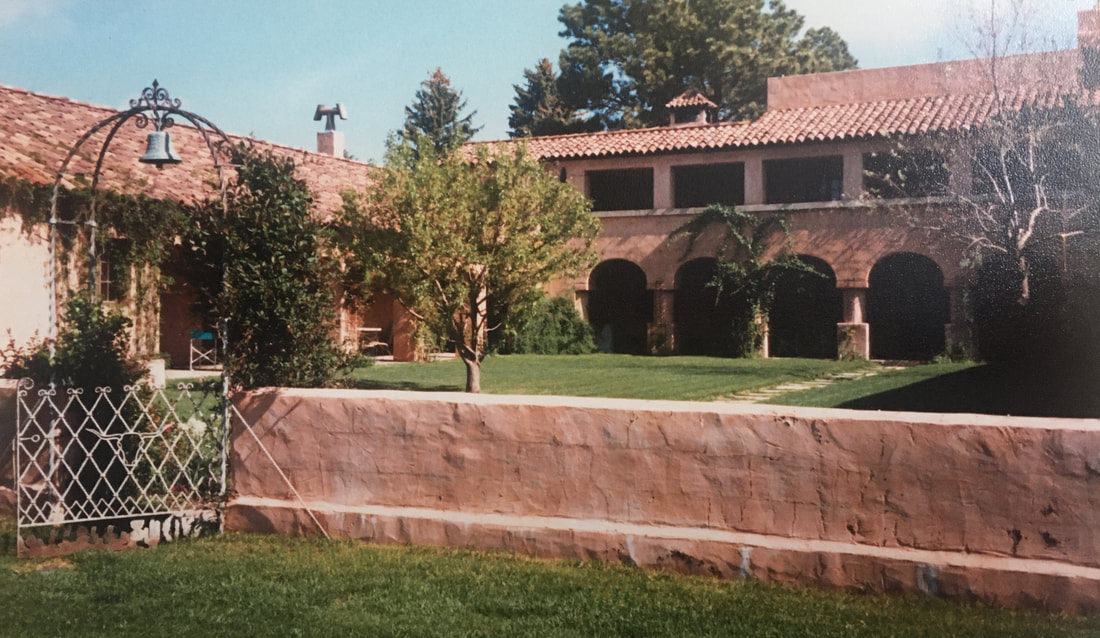
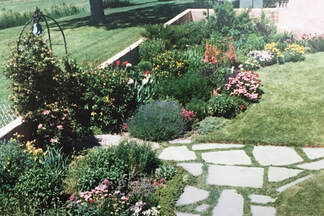
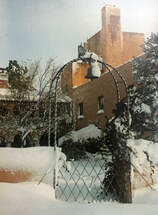
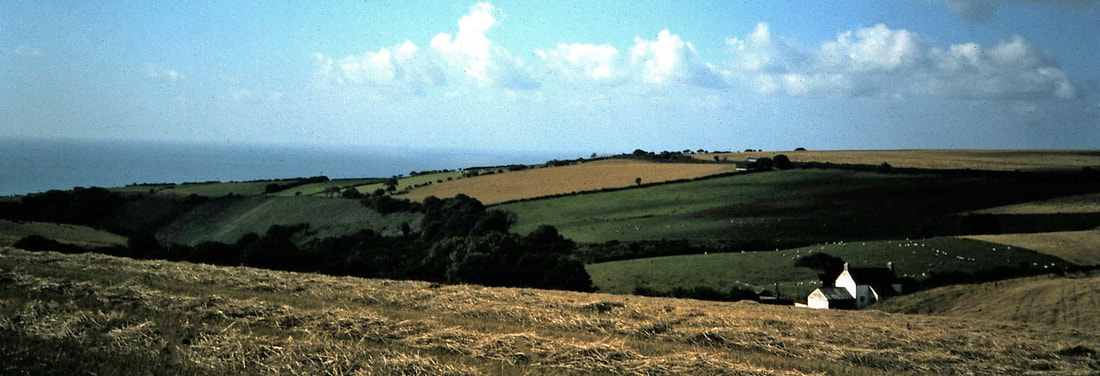
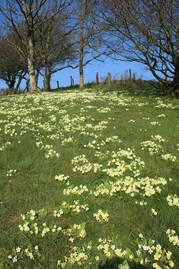
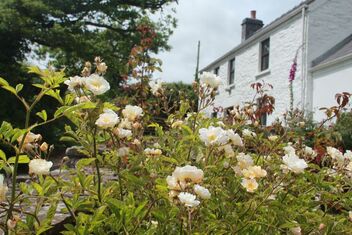
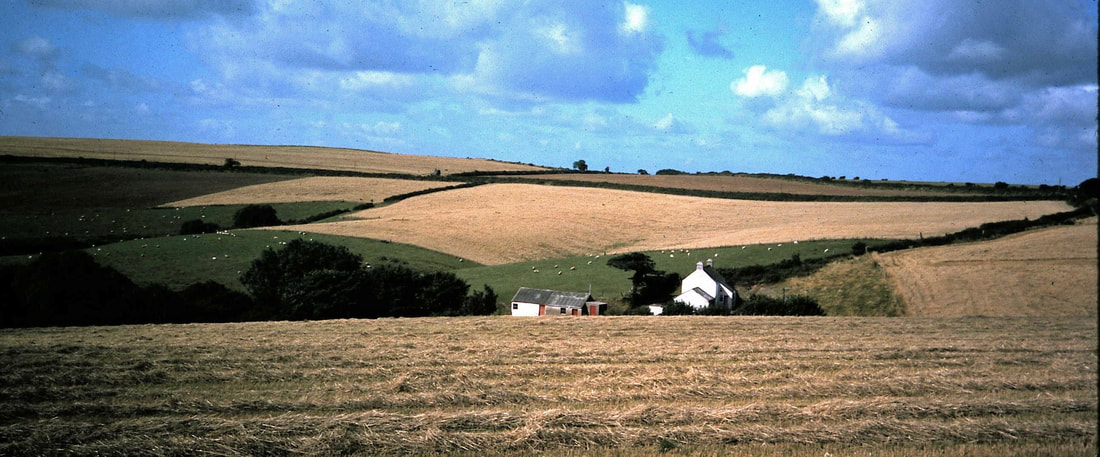
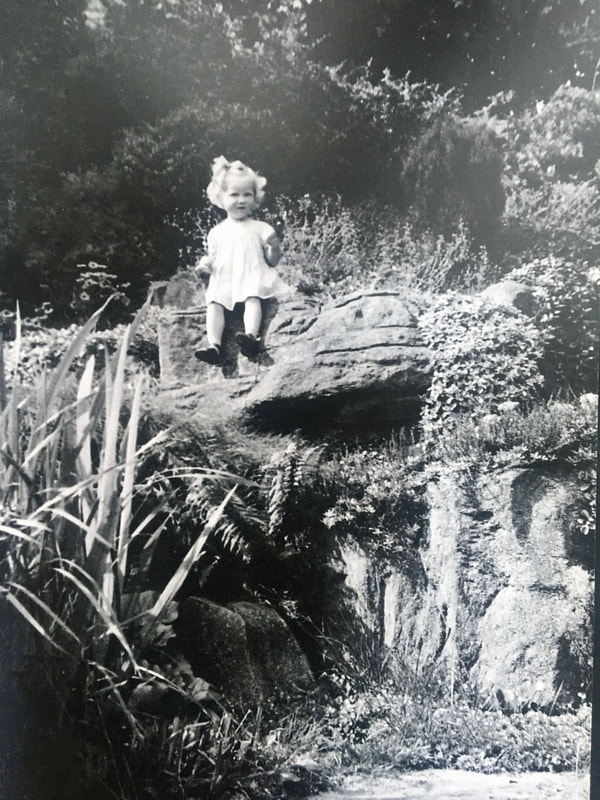
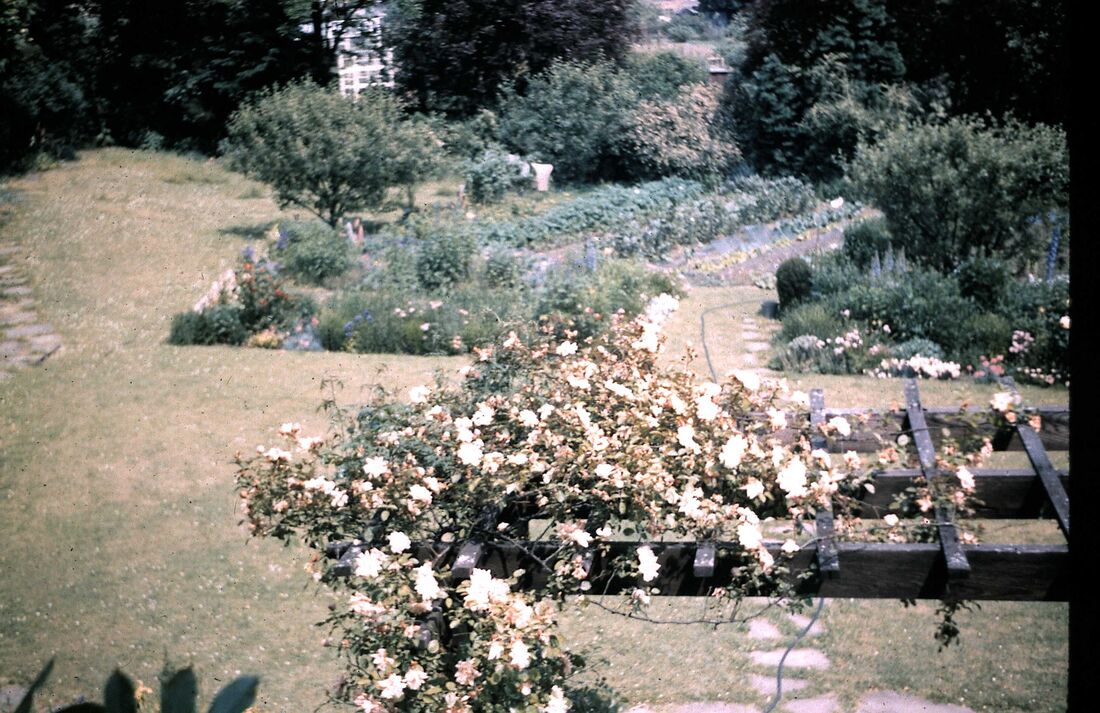
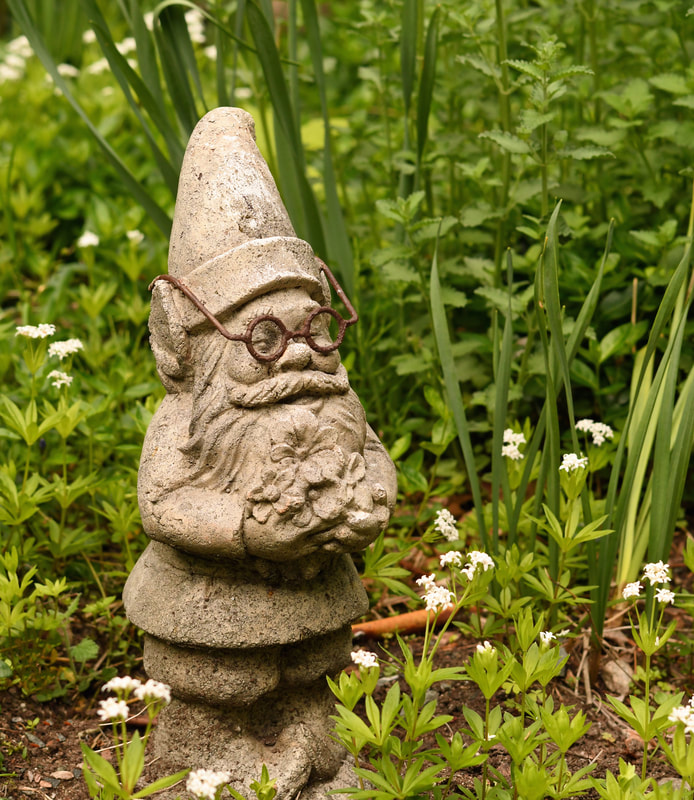
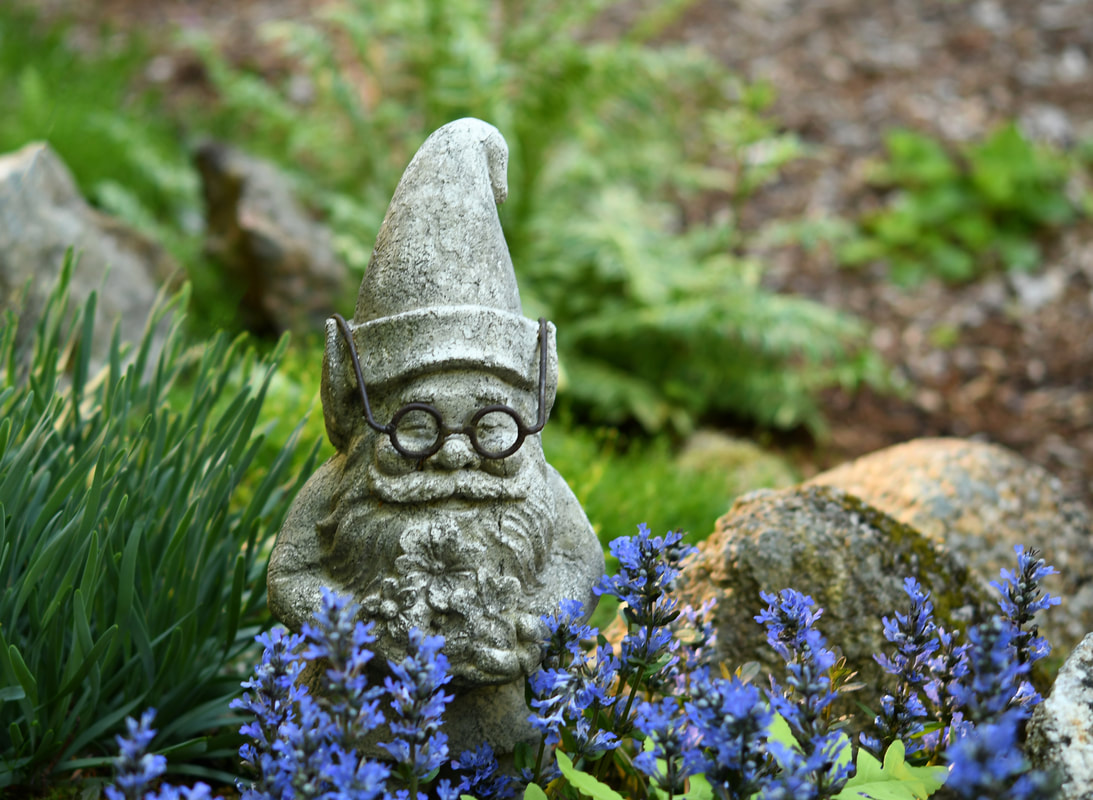
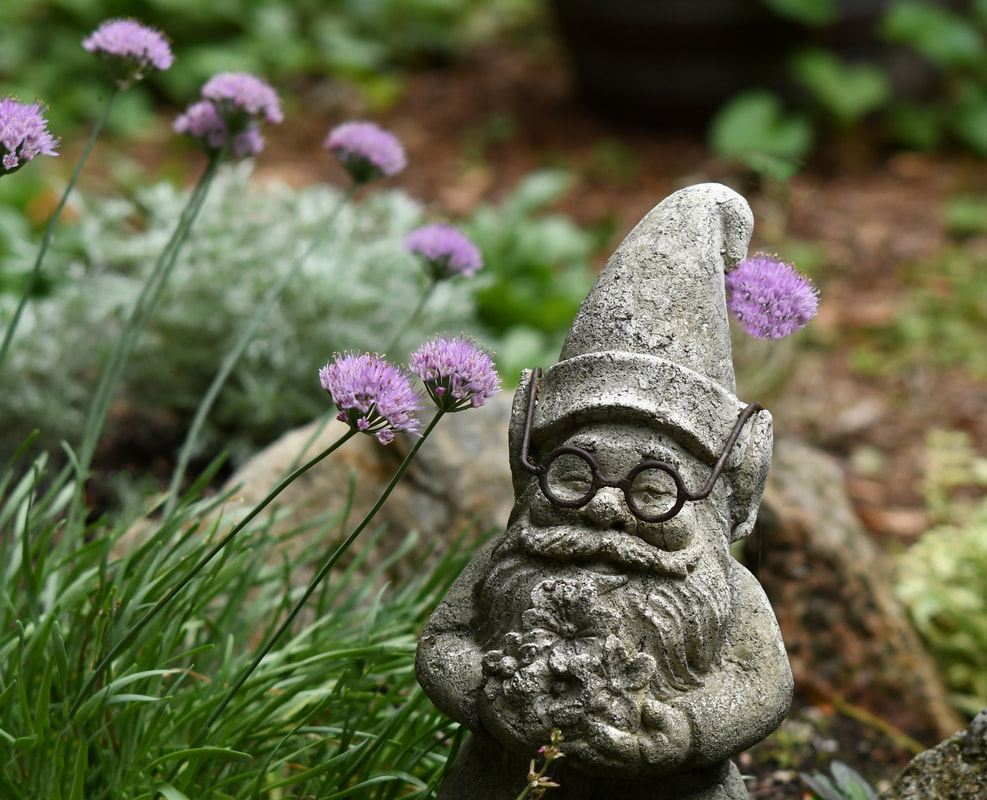

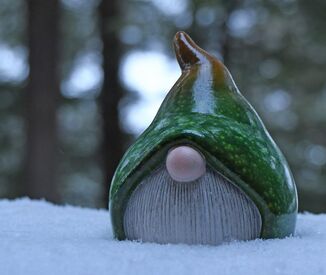
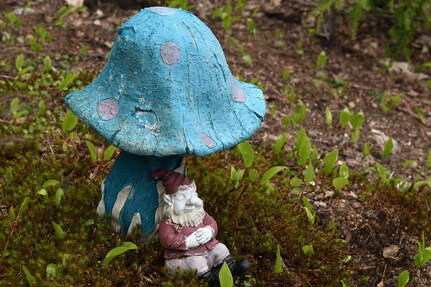

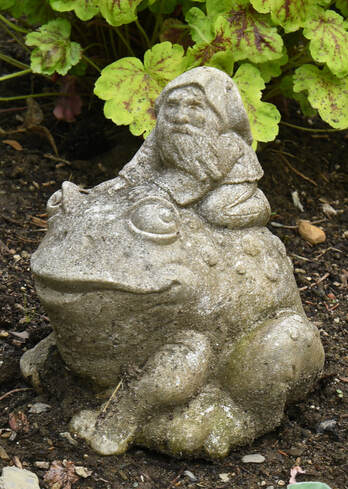
 RSS Feed
RSS Feed